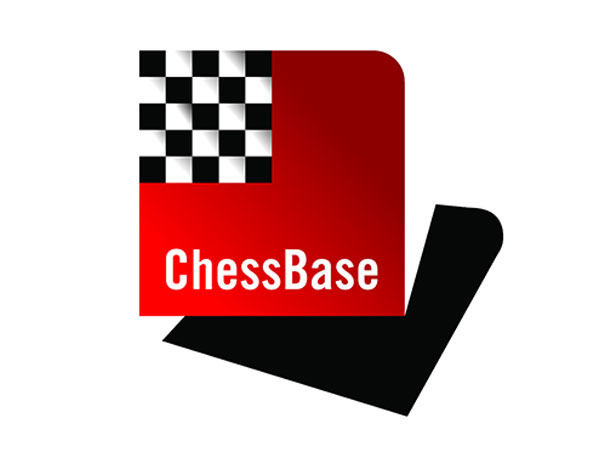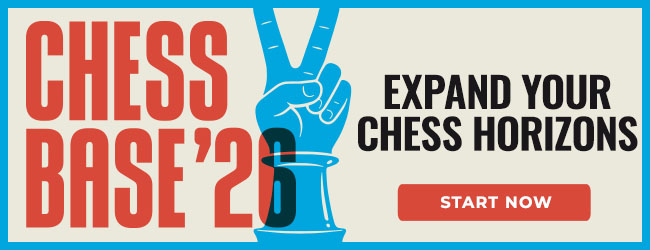
Chasing Chess Legacy – Fischer, Kasparov, Polgar, Nimzowitsch
By GM Lubomir Kavalek
One day the world's top-rated chess player Magnus Carlsen will sit down
and write about his games. This is what the great players do, but not yet.
At 21, he is too young to be distracted by that on the way to become the
world champion. Energy should go into playing the games, not writing about
them. Eventually, he will select his best games and say what needs to be
said. It will be his legacy.
The late Bobby Fischer, who would have been 70 on March 9, published his
only book, My 60 Memorable Games, at the age of 26, just prior
to his marvelous run for the world crown. Larry Evans provided introductions
to the games. It was praised as one of the best game collections. Robert
Hübner, the 1980 Candidates finalist and one of the world's top analysts,
scrutinized the book. Fischer, in his opinion, always searched for activity,
but missed "strong defensive moves and strategies." But Hübner
found the general quality of Fischer's creative ideas very high and his
desire for clarity in his positions and annotations outstanding.

Fischer and Evans playing chess in the swimming
pool before the match in Reykjavik in 1972.
Garry Kasparov will turn 50 on April 13 and his greatest fear is to become
irrelevant, as he stated a few times in New
in Chess. It explains his hectic life style, traveling around the globe,
challenging the political establishment in Russia, giving lectures and writing
books. But no matter what he does, his legacy is in chess.
The former world chess champion is not involved in playing professionally
anymore, he watches the game from the sidelines, but he has plenty to say.
After dipping into chess history in nine books, from My Great Predecessors
to On Modern Chess series, Kasparov tells his own story and presents 100
games in Garry Kasparov on Garry Kasparov, Part I: 1973-1985, published
by Everyman Chess.
Something might have been in the stars early on: he read newspapers at
the age of four and learned about every country in the world from a globe
his father gave him for his sixth birthday. He received a marriage proposal
from a little girl in the third grade and we almost lost him to swimming.
But Kasparov chose chess and under the guidance of his mother Klara, he
had a wonderful career.

Kasparov is proud of his latest book and talks about it on a new DVD, Kasparov
– How I became World Champion, recently issued by ChessBase.
It is a summary of the book, otherwise it would take 40-50 hours to cover
just the games. He speaks with a measured voice that can't be compared to
his fiery speeches in front of live audiences. He adds a few things not
found in the book.
From early on, he was looking for attacking set-ups, lining up the pieces
to storm the opponent's king. "I had a dream," he repeats, showing
one of his early games, and you can feel how he wants to force his pieces
to certain squares, almost physically. It is like a wish that the pieces
would listen to his commands against the chess logic. His energy level rises
as he shows beautiful moves and subvariations from his games.
In 1975, Kasparov changed his name from Weinstein to Kasparov after his
mother. He also played in the Soviet Junior Championship dominated by an
Alma-Ata player, Evgeny Vladimirov. It was an important year. The Soviets
got back the world title after Bobby Fischer refused to defend it against
Anatoly Karpov who already, at the age of 24, began to publish collections
of his games.
But not everything was lost on the other side of the Atlantic. The USCF
executive director Ed Edmondson, who cleared the political obstacles for
Fischer and helped him to become the world champion, started several programs
for young talented U.S. players.
I coached the late Mark Diesen and went with him to Groningen where he
became the 1976/77 Junior World champion for the first time since another
American, William Lombardy, swept away the competition 11-0 in Toronto in
1958. Having worked with Fischer in Reykjavik in 1972 and with Diesen's
success, I had suddenly two world champions on my coaching resume.
At that time I was more interested in playing. My best years were in the
1970s, having been rated among the world's top 10 on a few occasions. I
was still the top-rated American in 1982 when I met Kasparov for the first
time in Bugojno. He was having a great time, scoring his first major tournament
victory in a very strong field.

Bugojno 1982 - first row from the left : Ljubojevic,
Petrosjan, Andersson, Kavalek,
Litmanowicz (arbiter), Gligoric, Najdorf; middle row: Petronic (arbiter),
Spassky, Larsen,
Polugaevsky, Kasparov, Bjelica (organizer); top row: Hubner (hidden), Timman,
Ivanovic, Ivkov
Our game was a see-saw tactical battle, but it was during the post-mortem
when I encountered the full force of Kasparov's thinking.

[Event "Bugojno"] [Site "?"] [Date "1982.??.??"] [Round "9"] [White "Kavalek,
Lubomir"] [Black "Kasparov, Garry"] [Result "0-1"] [ECO "E90"] [WhiteElo
"2560"] [BlackElo "2690"] [Annotator "GM Lubomir Kavalek/The Huffington
Post"] [SetUp "1"] [FEN "r5k1/ppp1q1bp/3p2p1/3Pp3/1nP1P1bP/1QNn1NP1/PP1BK3/5R1R
b - - 0 19"] [PlyCount "17"] [EventDate "1982.??.??"] 19... Rf8 {I was
trying to catch one of the black knights, but I went about it clumsily:}
20. Nd1 $2 ({The knight move interrupts the control of the first rank
and Kasparov punished me. I knew I should have cleared a space for my
king and cover the square f2, but I found the right way too late. I pointed
it out to Kasparov after the game:} 20. Be3 $1 {The white king can hide
on the square d2 and at the same time the bishop controls the important
square f2. White also threatens to pick up a knight with 21.a3. But as
soon as I let my bishop plunge on the board, Kasparov immediately answered:}
Bh6 $3 {I grasped immediately that tactics are for him second nature and
the theme of deflection is child's play for him. Everything happened with
lightning speed. He didn't even let me move my pieces and pointed out
the rest.} 21. Bxh6 $1 {White doesn't have a choice. The black queen invades
the square f2.} Rxf3 (21... Bxf3+ 22. Ke3 $18) 22. Rxf3 (22. Kd2 Qf6 $1
$17) 22... Bxf3+ 23. Kxf3 Qf6+ 24. Kg2 Qf2+ 25. Kh3 Qf3 26. Rh2 $1 (26.
Kh2 Qf2+ 27. Kh3 Qf3 $11) 26... g5 $1 { Even this came rather fast. Wrong
would be 26...Qf1+? 27.Kg4 and white wins. White has to play} 27. Bxg5
$1 {and black has to make a draw with:} Qf1+ 28. Kg4 h5+ 29. Kxh5 Qf3+
30. Kh6 $1 (30. Kg6 $2 Qf7+ 31. Kh6 Qh7#) 30... Qf8+ {a draw by perpetual
check.}) 20... Qf7 21. Be3 ({One move too late after realizing that} 21.
Bxb4 $2 {loses to} Nc1+) 21... Bxf3+ 22. Kd2 Qd7 23. Rhg1 Qh3 24. a3 Bxe4
25. Rxf8+ Bxf8 26. axb4 Qh2+ 27. Kc3 Nc1 0-1
Kasparov's next volume will cover the 1985 - 1993 period. Kasparov mainly
works with Dmitry Plisecky, but his former coaches and researchers also
contribute to his monumental work. It is not unusual to find working tandems
in books of collected games. Fischer had Evans, the current world champion
Vishy Anand writes with John Nunn.
The all-time best woman chess player Judit Polgar acquired the help of
Mihail Marin. Her book How I Beat Fischer's Record, published by
Quality Chess, is conceived
as a teaching manual, mostly based on her games. The book showcases her
extraordinary tactical talent and it is entertaining and well written. She
plans two more volumes and it will be interesting to see it as a whole.
What she has done so far is very encouraging.
In the chapter on mating nets she published Aron Nimzowitsch's playful
composition that made a great impression on her when she was growing up.

[Event "Baltische Zeitung"] [Site "?"] [Date "1918.12.11"] [Round "?"]
[White "Nimzowitsch, Aron"] [Black "White mates in three moves"] [Result
"*"] [SetUp "1"] [FEN "5rn1/2N1npk1/R7/4P3/8/4P3/Q7/2K4R w - - 0 1"] [PlyCount
"5"] [EventDate "1918.??.??"] 1. Rg6+ $3 Nxg6 (1... fxg6 2. Qf7+ Rxf7
(2... Kxf7 3. Rh7#) 3. Ne6#) (1... Kxg6 2. Qg2+ Kf5 3. Rh5#) 2. Qxf7+
$1 Rxf7 (2... Kxf7 3. Rh7#) 3. Ne6# *
Nimzowitsch was fascinated by combinations at an early age. As a reward
for his good schoolwork, his father, a strong master, showed him the Immortal
game, Anderssen- Kieseritzky, and the young Aron grasped it immediately.

Aron Nimzowitsch in his 20s [image is from
Edward Winter's Chess
Notes]
McFarland & Company recently
published Aron Nimzowitsch: On the Road to Chess Mastery, 1886-1924, by
the Danish chess historians and writers Per Skjoldager and Jorn Erik Nielsen.
It is a marvelous, well-researched chess biography, tracing in great detail
the first part of the Latvian master's career. It ends two years after he
permanently settled in Denmark. There is plenty of documentation - charts,
maps, crosstables, photographs - to cover the period marred by World War
I that put many chess careers on hold. Some 450 games are included in this
volume, commented by Nimzovitsch himself or his contemporaries. We can see
from Nimzowitsch's writing how he began forming his theories on chess strategy
that made him one of the founders of the Hypermodern chess.
The authors plan a second volume on the period from 1925, the year in which
Nimzowitsch published his influential works My System and The Blockade,
till his death in 1935. Judging from their meticulous work, it may take
them a few years to finish. It will be worth waiting for.
Original
column here – Copyright
Huffington Post

The Huffington Post is an American news website and aggregated blog founded
by Arianna Huffington and others, featuring various news sources and columnists.
The site was launched on May 9, 2005, as a commentary outlet and liberal/progressive
alternative to conservative news websites. It offers coverage of politics,
media, business, entertainment, living, style, the green movement, world
news, and comedy. It is a top destination for news, blogs, and original
content. The Huffington Post has an active community, with over one million
comments made on the site each month. According to Nielsen NetRatings, the
site has around 13 million unique visitors per month (number for March 2010);
according to Google Analytics the number is 22 million uniques per month.
























